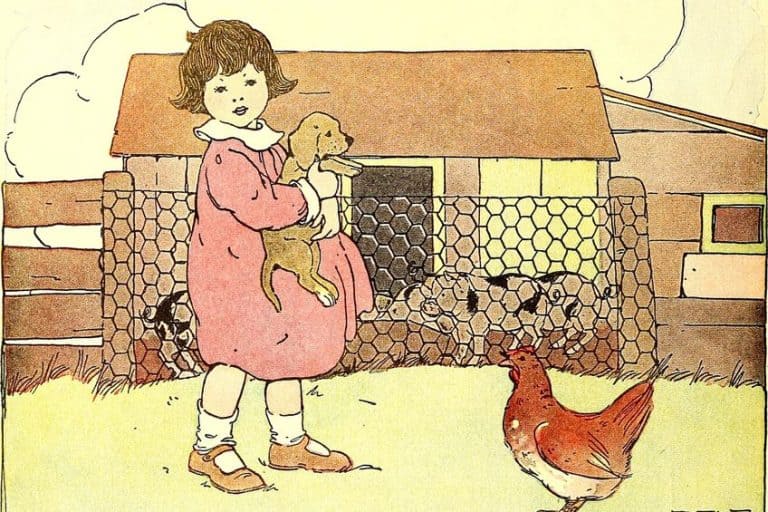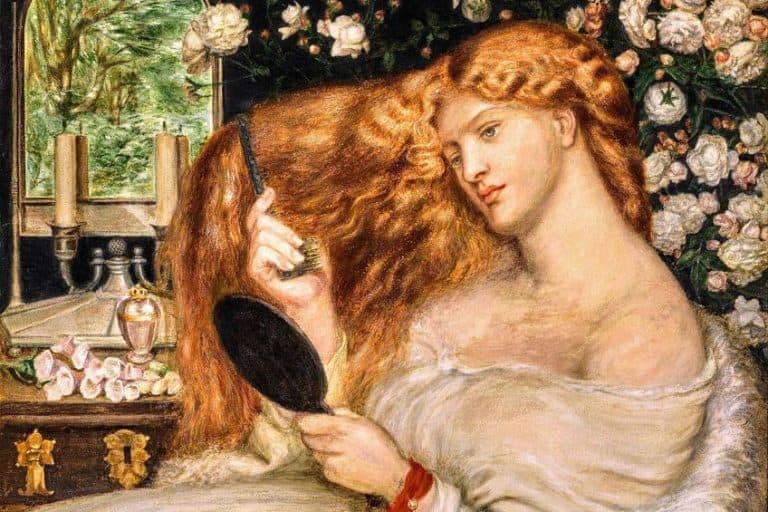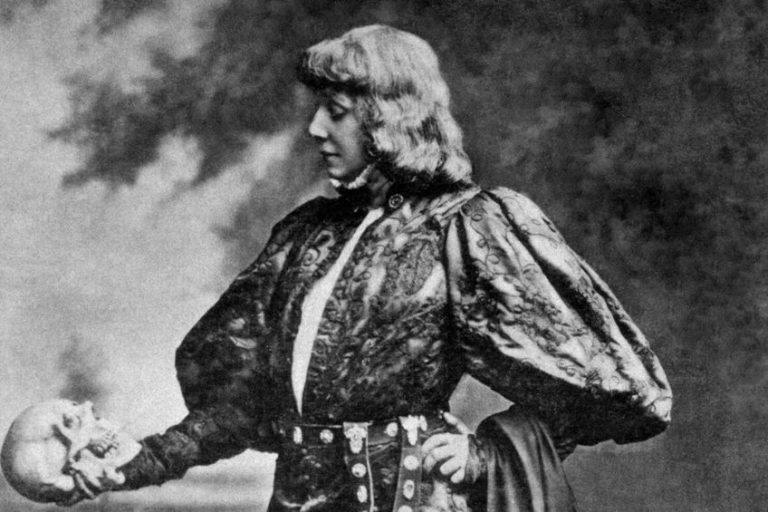Trochaic Meter in Poetry – A Detailed Explanation With Examples
Poetry typically makes use of meter. What is meter? Well, that’s a question that will be answered today alongside the more specific question that is: what is trochaic meter in poetry? We will answer this question by having a look at the concept as a whole, the other types of meter that operate alongside trochaic meter, the principal characteristics of trochaic meter in poetry, and a few examples of trochaic meter in poetry for good measure. All of these elements together should aid in a better understanding of trochaic meter in poetry. If you hold an interest in poetry in general and meter in particular, then this article is for you!
A Look at Trochaic Meter in Poetry
To understand poetry, we often need to understand meter. There are many different types of metrical structures in poetry, but today we’ll only look at one of those varieties. This is trochaic meter in poetry. In this case, the structure of this particular meter is arranged as the opposite of iambic meter, but we will get to all of that in time. For now, we are instead going to hop into something more summarized as a bit of preparation for what is to come throughout the remainder of the article.

A Summary of Trochaic Meter in Poetry
When it comes to understanding any form of meter, one should spend some time attempting to understand the basic points that can be distilled down into some bite-sized chunks. That is why this summary is a useful tool for those who would like to better understand trochaic meter in poetry.
Let’s have a quick look at these brief points:
- Trochaic meter in poetry is a type of poetic foot. This means that trochaic meter in poetry is a form of metrical structure, and this refers to the beat of a poem. Specifically, it refers to the arrangement of stressed and unstressed syllables and how they are placed alongside one another.
- Trochaic meter in poetry is arranged as two syllables. Every type of metrical structure is different, but many of the most common forms of meter make use of two syllables per foot. There can be any number of poetic feet within each line. trochaic meter in poetry shares the paired syllable structure with other major forms of meter, such as iambic meter.
- Trochaic meter in poetry uses one stressed and one unstressed syllable. The specific arrangement of syllable beats is the major factor that leads to us differentiating one type of meter from the next. In terms of trochaic meter in poetry, it is effectively the opposite of iambic meter, which is the most common form of meter in the English language.
Each of these points is very basic in their presentation. These are the simplified versions of trochaic meter in poetry, but if you want to know a lot more about this particular metrical structure, then you should proceed to the next section where we will discuss a better definition of trochaic meter in poetry.
A Definition of Trochaic Meter in Poetry
At a very simple level, it is easy to define trochaic meter in poetry. This type of meter is arranged with a specific set of syllable beats. In this case, the form of meter makes use of a pair of syllables, in much the same way as something like iambic meter. However, unlike with iambic meter, these syllables are arranged in a stressed-unstressed arrangement. This also means that it can be seen as the opposite kind of meter as iambic meter.

We will explore some of the characteristics that this particular arrangement produces in a metrical structure, but before we get into that, it is worth stating that, like all other forms of meter, trochaic meter in poetry requires additional elaboration. While a trochaic metrical foot is made up of two syllables, there are rarely two syllables in a line of poetry. For this reason, we use various other terms to add to what kind of trochaic meter is used.
A poem could make use of only a single foot per line, and this would then be called trochaic monometer. If there were three, it would be trimeter, and five would be pentameter, and so on. There are various terms such as these that describe the total number of metrical feet that can be found in each poem. These terms, which are affixed to the end of the term, are important to understand how a poem makes more particular use of trochaic meter in poetry.
The Other Types of Metrical Structures in Poetry
There are a variety of other metrical structures in poetry. Trochaic meter, which is made up of trochees, is only one of them, and there are others, such as iambic and spondaic meter. These are, respectively, the forms that make use of an unstressed-stressed pair and a stressed-stressed pair. Each of these different types of meter have their own functions.
It is good to understand some of the other metrical structures when exploring any variety of poetry because then you will have a far greater appreciation for how meter can be used.
The Characteristics of Trochaic Meter in Poetry
The characteristics of trochaic meter in poetry have to do with the ways in which the two-syllable structure of this metrical structure is arranged. The primary effect that is produced is a kind of falling rhythm. This means that because the first syllable is stressed and the second is unstressed that the stress of the first syllable drops rather than rises. This creates a more melancholic sound for the reader.

Trochaic meter is a more unique sound than something like iambic meter because it does not sound particularly natural. This means that it can often sound a lot more “poetic” when read aloud. It sounds far more deliberate and uneasy. This is why it can often be found in elegies and poems that explore death or misfortune. However, its unnatural quality also makes it difficult to maintain. This is why trochaic meter in poetry is often mixed with other varieties of meter. It sounds strange and distant, and when paired with other metrical structures within the same poem, it can make everything around it feel strange by association. This is the power of trochaic meter in poetry.
The Popularity of Trochaic Meter in Poetry
While trochaic meter in poetry is not the most uncommon of all the different types of poetry, it is also not the most common by a long shot. Instead, trochaic meter in poetry is only fairly common and tends to have a very specific use when it is adopted. We have already explored some of the reasons that trochaic meter may be used in a poem, and it generally has to do with giving a poem a more mournful or morose feeling. However, when compared to iambic meter, especially iambic pentameter, this particular variety of meter is very uncommon. The English language tends to favor an early unstressed syllable that is subsequently followed by another syllable that is stressed rather than the other way around.
The more artificial nature of trochaic meter in poetry does mean that it has very particular uses though, and those uses are generally highly poetic in nature.
In some of the examples of trochaic meter in poetry in the next section of this article, we will show that trochaic meter can be used to create a more unnatural sound that can make a poem sound more like what you may expect out of poetry. It does not want to sound normal or natural, and that is to its benefit. It has made it that this meter is less used, though. So, there are always tradeoffs!
Examples of Trochaic Meter in Poetry
To understand the use of meter in any form of poetry, we need to also look at some actual instances of that particular metrical structure. In this case, we need to examine trochaic meter in some specific poetic examples. Actual examples, in my experience, have always been a great way to help others to learn about a particular concept. Thinking in the abstract certainly has its place in education, but going through actual examples and attempting to see it in action is a whole other thing. So, let’s do just that!

Song of the Witches (1606) by William Shakespeare
| Date Published | 1606 |
| Type of Poem | Song/chant |
| Rhyme Scheme | ABAB |
| Meter | Trochaic tetrameter |
| Topic | Witch’s chant |
Song of the Witches is not strictly a poem but rather a segment from the Shakespearean tragedy, Macbeth. In this particular song/chant, a group of witches cast a spell. They do so by using a number of different ingredients that tend to be sickly and grotesque in their description. This shows how the use of trochaic meter in poetry can be used as a means of producing a more disorientating effect. The witches do not speak like ordinary people, and the way that they chant is meant to be unsettling.
This is a strong use of trochaic meter, and it has also come to be seen as one of the best-known instances of it too.

The Tyger (1794) by William Blake
| Date Published | 1794 |
| Type of Poem | Lyric poem |
| Rhyme Scheme | AABB |
| Meter | Trochaic tetrameter |
| Topic | The existence of god |
The Tyger is an incredibly famous Romantic poem and one that questions the very nature of god’s existence and various concepts surrounding god. The opening line of the poem employs trochaic meter, and this is maintained to produce a distinct and strange delivery. However, the poem does vary up its use of meter, and trochaic meter is not used throughout the poem in every single line. The variability is one of the central characteristics of meter in general as different metrical structures can produce different feelings and so varying them within a poem can be useful.
The same is true of the next poem on this brief list.

The Raven (1845) by Edgar Allan Poe
| Date Published | 1845 |
| Type of Poem | Narrative poem |
| Rhyme Scheme | ABCBBB |
| Meter | Trochaic octameter |
| Topic | Sorrow |
The Raven is probably one of the most well-known poems of all time and an immensely important text in the history of Gothic poetry. However, while the poem does explore ideas surrounding sorrow and mourning, it is also an incredibly rhythmic poem with a stunning musicality to it. One of the main reasons for this is the use of a highly variable metrical structure. It uses trochaic meter as one of those metrical structures, and this allows it to have a more unnatural and musical quality to it that is not typically seen in ordinary communication.
The changes in meter operate alongside a highly developed rhyming structure to produce a beautiful if terribly sad poem.

Sorrow (1917) by Edna St. Vincent Millay
| Date Published | 1917 |
| Type of Poem | Lyric poem |
| Rhyme Scheme | ABAAAB |
| Meter | Trochaic meter |
| Topic | Depression |
Sorrow is a poem with a focus on the topic of depression. This is clearly a darker subject and one that is perfectly suited to the trochaic meter. The poem details the way that the speaker feels sorrow for their life and that there is no real way to escape this particular way of feeling about the world. The use of the higher syllable that comes first allows the poem to have a downward beat that results in a more stressed beginning that leads to a weaker and more passive ending to each metrical foot.
This shows how trochaic meter in poetry can be used as a means of showing issues with psychological well-being and mental health.

In Memory of W.B. Yeats (1940) by W.H. Auden
| Date Published | 1940 |
| Type of Poem | Elegy |
| Rhyme Scheme | Variable |
| Meter | Trochaic meter |
| Topic | Death |
In Memory of W.B. Yeats is a poem that explores the ideas surrounding life after death. It stands in memory of the famous poet, W.B. Yeats, and it discusses the role of the poet in society and the human condition. The poet makes use of trochaic meter to produce a more melancholic tone because it creates a downward emphasis. The stressed syllable slides down to create this sadder tone. This shows one of the ways in which trochaic meter in poetry can be used to produce more depressive works that are particularly suited to elegies and other similar poems that focus on mourning or death.

While trochaic meter in poetry may not be as famous as iambic meter, it certainly is a common variety in comparison to many other varieties. This is one of the reasons why we have examined trochaic meter in poetry today. We have done so by exploring the principal characteristics of the form, some of the other types of meter that can be compared to trochaic meter, the popularity of it, and a handful of examples of trochaic meter in poetry. For those who want to know and understand poetic ideas like trochaic meter, this article should have offered a good general overview. However, there are always more examples of the form out there to explore!
Frequently Asked Questions
What Is Trochaic Meter in Poetry?
Basically, this is a type of meter that is made up of two syllables, and these syllables are arranged as one stressed and one unstressed. This could lead one to see trochaic meter as something of an opposite to iambic meter in poetry. The arrangement of stressed and unstressed syllables is reversed, after all. This form is not as popular in the English language as iambic meter, though.
Which Types of Meter Exist Other Than Trochaic Meter?
There are many types of meter other than trochaic meter. There are examples such as iambic, spondaic, and anapestic meter. Each of these forms of meter has a different kind of structure that is associated with it. For instance, anapestic meter differs from trochaic meter in poetry by having three syllables per foot, and they are arranged as two unstressed followed by a single stressed syllable.
How Common Is Trochaic Meter in Poetry?
While the use of trochaic meter in poetry is a lot less common than something like iambic meter, it is still more common than some other varieties. It is often noted for its more melancholic sound, and this has contributed to the way that it has been used. It has also contributed to the fact that it is far less commonly used than some other forms of metrical structures out there.
What Are the Characteristics of Trochaic Meter in Poetry?
The principal characteristic of trochaic meter in poetry is that it makes use of a falling rhythm. This is because the stressed syllable appears first and affects the way the subsequent syllable is treated. In addition to this, trochaic meter is often found alongside other forms of meter because it can be a strange metrical structure to use on its own.
What Are Some of the Examples of Trochaic Meter in Poetry?
This form of meter can be found in many poems. Some of the most notable include The Tyger (1794) by William Blake, The Raven (1845) by Edgar Allan Poe, and Sorrow (1917) by Edna St. Vincent Millay. However, there are many other examples of trochaic meter in poetry in the world that are worth examining.
Justin van Huyssteen is a freelance writer, novelist, and academic originally from Cape Town, South Africa. At present, he has a bachelor’s degree in English and literary theory and an honor’s degree in literary theory. He is currently working towards his master’s degree in literary theory with a focus on animal studies, critical theory, and semiotics within literature. As a novelist and freelancer, he often writes under the pen name L.C. Lupus.
Justin’s preferred literary movements include modern and postmodern literature with literary fiction and genre fiction like sci-fi, post-apocalyptic, and horror being of particular interest. His academia extends to his interest in prose and narratology. He enjoys analyzing a variety of mediums through a literary lens, such as graphic novels, film, and video games.
Justin is working for artincontext.org as an author and content writer since 2022. He is responsible for all blog posts about architecture, literature and poetry.
Learn more about Justin van Huyssteen and the Art in Context Team.
Cite this Article
Justin, van Huyssteen, “Trochaic Meter in Poetry – A Detailed Explanation With Examples.” Art in Context. January 18, 2024. URL: https://artincontext.org/trochaic-meter-in-poetry/
van Huyssteen, J. (2024, 18 January). Trochaic Meter in Poetry – A Detailed Explanation With Examples. Art in Context. https://artincontext.org/trochaic-meter-in-poetry/
van Huyssteen, Justin. “Trochaic Meter in Poetry – A Detailed Explanation With Examples.” Art in Context, January 18, 2024. https://artincontext.org/trochaic-meter-in-poetry/.









